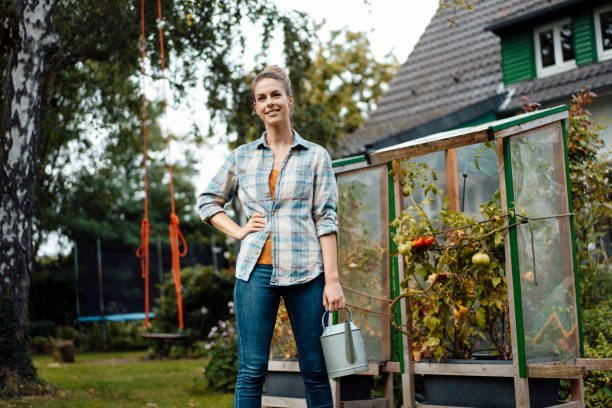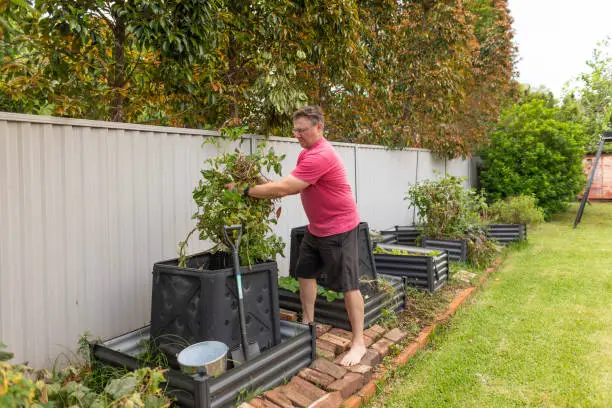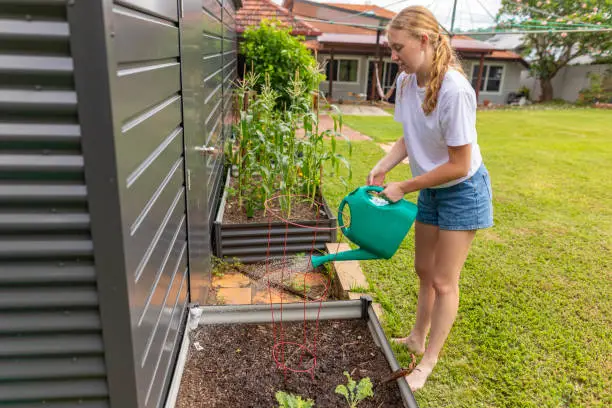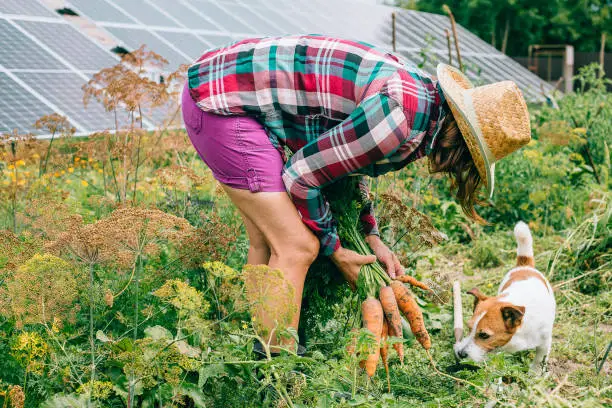Encourage Pollinators and Beneficial Insects: A Guide for Backyard Homesteaders
The backyard homesteading emphasizes farming and animal husbandry. However, encouraging pollinators and beneficial insects in one’s homestead habitat is equally important. These little, often ignored organisms help our crops and the environment thrive. These insects’ concord with our homesteads is helpful and necessary for a biodiverse ecology.

Plant reproduction relies on pollinators like bees, butterflies, moths, birds, and bats to fertilize fruit and seed production. With this dedicated labor, many of our staple crops would be expected. On the other hand, ladybugs, lacewings, and predatory beetles control pests that can destroy crops.
Creating a friendly habitat for these insects starts with understanding their needs and behaviors. During their active seasons, pollinators need nectar and pollen. Planting various flowering plants that bloom at different times ensures that there is always something in bloom from early spring to late October. Native plants are essential because they develop with local pollinators and provide the most nutritious and accessible resources.
The structure and style of your garden also affect beneficial insect attraction. Adding different plant heights and types makes the space more attractive and accessible. Many species depend on ground-covering plants foraging, while tall sunflowers provide shade and protection. Leaving part of your yard wild can also provide a nesting and wintering spot for these critters.
These insects also need water, especially in heat. A birdbath or shallow dish with stones and water can hydrate pollinators and attract other beneficial wildlife to your garden. Water must be changed often to prevent mosquito breeding.
Keeping pollinators and beneficial insects safe requires avoiding toxic pesticides and herbicides. These chemicals can kill these species in small doses. Choose natural pest management measures like encouraging predatory insects, netting, or organic chemicals that are less hazardous to non-target species.
Nesting and overwintering habitats are also important. Bees, butterflies, and other pollinators need precise circumstances for their larvae. Deadwood, bare soil, or a mound of leaves in a garden corner can provide nesting places. Some helpful insects hibernate in undisturbed areas in winter.
A floral hedge or buffer around your home adds beauty and provides a habitat for these insects. It can be a windbreak, a source of continuous flowering plants, and a corridor for pollinators and beneficial insects to migrate throughout your farm.
Companion planting attracts helpful insects to your garden. Planting particular combinations can discourage pests, attract pollinators, and boost crop growth and flavor. Lavender attracts numerous pollinators, while marigolds repel pests.
Finally, learning about local pollinators and beneficial insects can help you support them. Local gardening clubs, extension services, and wildlife organizations can offer advice. Participating in citizen science projects like pollinator counts and monitoring can help conserve these critical species.
By adopting these strategies, backyard homesteaders improve their gardens and the surrounding ecosystem. The delicate dance between plants and their pollinators, supported by helpful insects, is a natural marvel that assures a resilient and prosperous household. Through careful planning and sustainable practices, we can build environments that nourish humans and wildlife, deepening our relationship with nature.
Natural Predator Deterrence: Backyard Homestead Livestock Protection
Many backyard homesteaders struggle to safeguard animals from neighborhood predators. Foxes, coyotes, hawks, and bears can threaten your homestead, whether on the outskirts of a rural town or in a highly wooded location. Lethal tactics disturb the local environment, harm non-target species, and may cause legal complications. Fortunately, many natural and non-lethal predator deterrents can protect your livestock and surrounding biodiversity.
Implementing successful deterrence methods requires understanding predator behavior and motivations. Predators usually target homesteads for simple food. The harder they get to your animals, the less likely they are to stay. Simple measures like keeping animals in strong fences at night can decrease predation. Electric fencing or fences placed several inches underground can stop foxes and badgers from digging these constructions.
Noise scares off many nocturnal predators. Devices that emit irregular sounds or human voices can make predators nervous. Motion-activated lights can also scare and confuse coyotes and raccoons, who fear exposure. Visual deterrents like reflective tape or predator decoys can make hawks and owls afraid to attack your poultry.
Livestock guardians are another helpful method. Dogs, donkeys, and llamas have protected cattle from predators for ages. Guardian dogs bark to deter predators, while donkeys and llamas use their hooves and teeth to protect their young. Selecting suitable species and individuals for your scenario, training them, and bonding them with the livestock they protect are essential to success with guardian animals.
Predator deterrence can also depend on the homestead layout. Human activity deters cattle from approaching your home or core structures, and strategically placing feeding and watering stations reduces vulnerable places. Rotational grazing increases pasture quality and confuses predators, making it more challenging to target your livestock.
Creating a biodiversity-rich habitat can enhance natural predator-prey dynamics and reduce predator reliance on livestock in addition to structural and physical interventions. Increasing the number of natural predators like birds of prey can help control the population of lesser predators. Maintaining diverse animal habitats helps redirect predators away from cattle by providing alternate food sources.
Community-based predator management is also worth exploring. Working with neighbors and wildlife conservation groups can create a regional strategy, and sharing experiences and methods can reveal new solutions.
Strategies must be monitored and adjusted over time. Without variety, predators can become habituated to deterrents. Therefore, it’s crucial to cycle and introduce new ones. Maintaining extensive predation attempts and breach records might help you uncover defense vulnerabilities and make targeted fixes.
Most important is tolerance and care for the wildlife we share our environments with. Non-malicious predators are just trying to survive. We can protect livestock and the environment with intelligent, non-lethal deterrents. This strategy protects our animals and strengthens the local ecosystem, promoting biodiversity that benefits us all.
By following these methods, backyard homesteaders protect their cattle and promote environmental stewardship. Through imaginative and compassionate management, we may develop homesteads that grow in harmony with the wild, preserving the prosperity of our domestic and wild neighbors for generations.






Leave a Reply